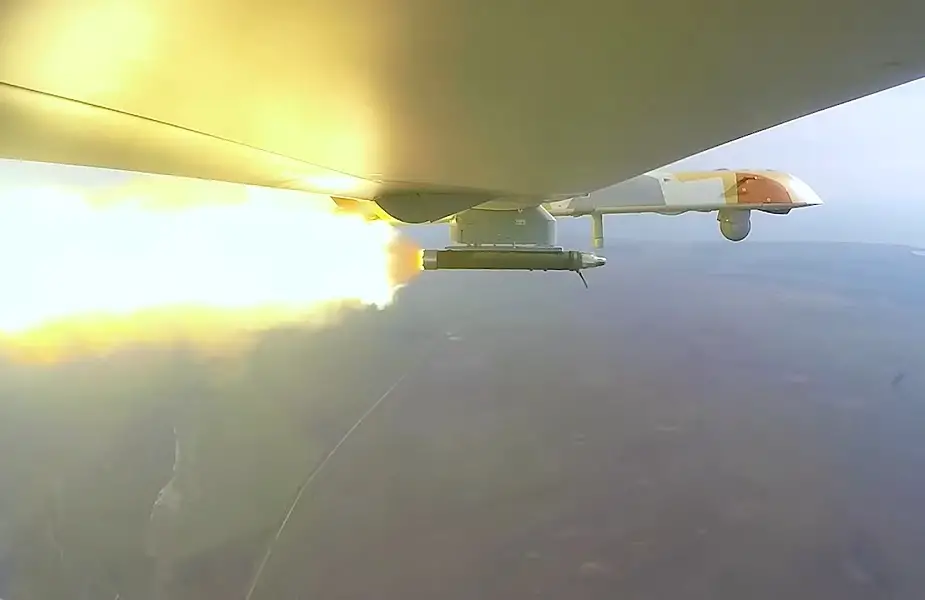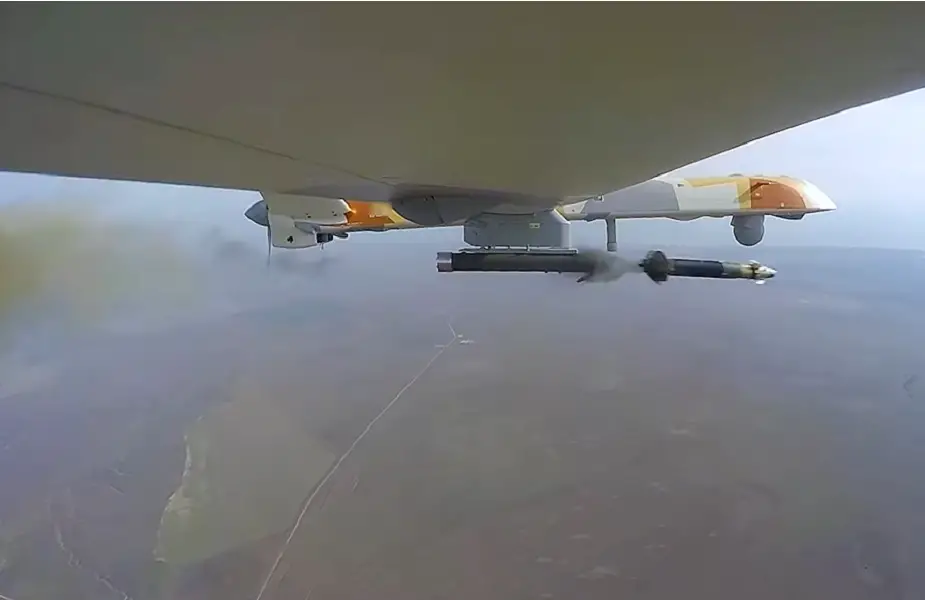The Russian Ministry of Defense had released a video showcasing the first use of the Orion drone against an aerial target.
Follow Air Recognition on Google News at this link

During the flight, Orion hit ground targets and a helicopter-type drone simulating a maneuvering air target (Picture source: Russian MoD)
At present, specialists are testing an aerial reconnaissance complex with unmanned aerial vehicles of long duration of flight, being developed by the Kronstadt group of companies by order of the Russian Ministry of Defense. The Orion UAV will significantly expand the combat capabilities of the Russian Armed Forces. It allows not only to conduct aerial reconnaissance at a great distance from the base airfield for tens of hours, but also to immediately strike at uncovered targets.
 The video does not share any details of the weapon used to hit the target (Picture source: Russian MoD)
The video does not share any details of the weapon used to hit the target (Picture source: Russian MoD)
About Orion UAV:
Orion has a normal aerodynamic scheme with a 16-meter wing in the middle and V-shaped tail fins. Maximum takeoff weight is 1200 kg. The drone and mechanisms are made of carbon plastic composite materials to decrease the glider weight. Vacuum infusion technology was introduced. The drone has an electric impulse anti-icing system for operation in low temperatures.
A piston engine is in the tail to rotate and push a two-blade propeller. APD-115T engine was designed by Itlan Company and is likely an analogue of the Austrian Rotax 914 of 115 HP used in various drones, including US heavy Predator.
AV-115 adjustable pitch propeller was designed by the Russian Aerosila Company. It is the first in the family of highly effective drone propellers.
Orion can fly 24 hours at altitudes of 7500 meters. Its communication system was designed by Luch Bureau in Rybinsk. The range is 250 km. The drone takes off and lands automatically as an airplane with three retractable wheels.
It can carry a 200-kg payload, including the multichannel MOES stabilized electronic monitoring system. It was designed by Precision Instrument-Manufacturing System Corporation to detect and track targets day and night and provide guidance for weapons.
The drone can carry a radar or a photo survey unit, as well as reconnaissance and electronic warfare means. The equipment is accommodated in a compartment under the central fuselage.
















